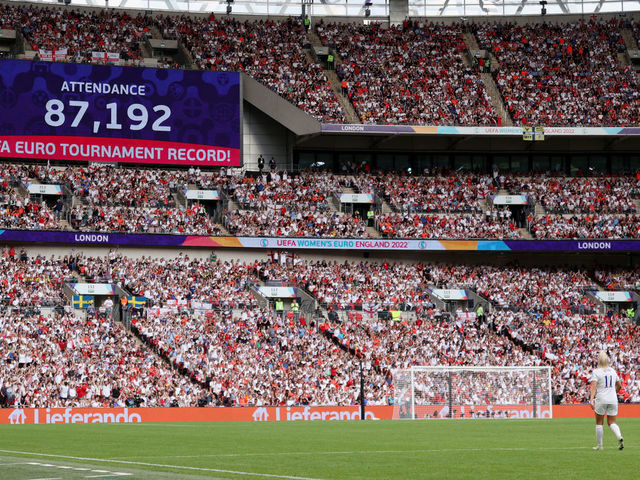
Introduction
The Women’s Euro Final Stadium holds a crucial place in the landscape of women’s football, symbolising the growth and recognition of the sport. Following the success of the UEFA Women’s Euro 2022 tournament, which took place in the UK, the stadium where the final was held has become a beacon for aspiring female athletes and fans alike. Understanding the significance of this venue sheds light on the ongoing evolution of women’s sports and community support.
Women’s Euro 2022 Final
The Women’s Euro 2022 concluded with an exhilarating match at Wembley Stadium in London on July 31, 2022. The final saw England triumph over Germany in front of a record crowd of over 87,000 spectators, which was the highest attendance for a UEFA Women’s Euro final. This remarkable turnout showcased the growing popularity of women’s football, highlighting the increasing engagement from fans and the critical investment in the game’s infrastructure.
Impact on Women’s Football
The importance of the venue extends beyond its physical structure. Wembley Stadium, a historic site for significant football events, offered a platform for female athletes to showcase their talent on a global stage. The prominence of hosting the final at Wembley not only elevated the profile of women’s football but also inspired younger generations of players. Many female athletes and advocates believe that such visibility is vital for the future of the sport, as it encourages widespread participation and support.
Future Developments
Looking ahead, the success of the Women’s Euro Final Stadium can lead to more significant investments in women’s football infrastructure. UEFA and other football governing bodies have highlighted plans to develop women’s leagues and enhance the visibility of female competitions. With grassroots programmes gaining momentum and increased media coverage, the days ahead look promising for women’s football globally.
Conclusion
In conclusion, the Women’s Euro Final Stadium epitomises the advancements made in women’s football, serving as a crucial site for both athletes and fans. The event’s success at Wembley Stadium is a clear indication of the potential that lies in women’s sports. As we move forward, it is vital for stakeholders to continue investing in women’s football, ensuring that it grows alongside its male counterparts and garners the support it rightfully deserves.
You may also like

Understanding the FA Cup Third Round Draw 2023

Al-Nassr vs Goa: A Clash of Titans in Football
